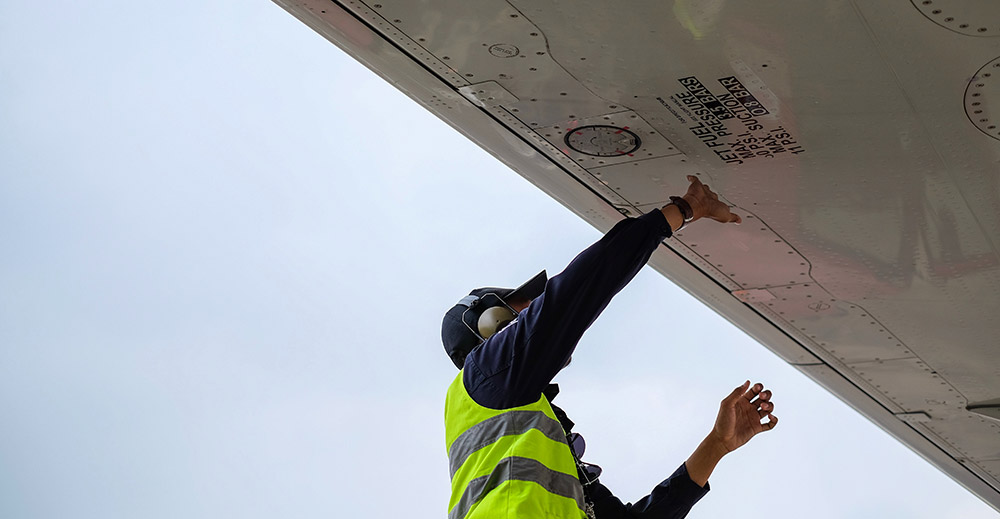The Federal Aviation Administration (FAA) is not immune to the changes affecting other industries over the last few years. Changes in technology have enabled inspections to be conducted in a virtual environment. However, due to the potentially life-threatening nature that infrastructure like planes and helicopters operate in, the FAA has been cautious and slow on comments regarding Remote Visual Inspections. Regardless, recent policy changes will make conducting remote inspections a reality in this field. The Covid-19 pandemic only increased the urgency with which this was to be completed. So, in doing its part to keep with special requests due to Covid-19 social distancing guidelines; the FAA has updated its policy on using the tools of Remote Visual Inspection; that of video links, high resolution images and checklists. The FAA’s new guidelines came out at the end of March 2021 and informs inspectors as to what types of tests may be conducted remotely. CloudVisit’s expertise in the field of virtual inspections, custom software development, systems integration and more, can help airlines and aviation industry leaders to utilize this proven technology.
The FAA’s New Guidelines For Remote Inspections
In many ways, while this policy update reflected a significant shift in the way the FAA allowed inspections to be conducted; not much has changed regarding the procedures that are allowed. So in one sense nothing has changed at all. This is because after considering all of the ways that a remote inspection could be conducted, safety remains the paramount concern. Therefore, most of the procedures that were in place will stay in place unchanged from FAA’s previous guidelines. For example, any test which previously required a member of the flight crew to be physically onsite cannot be substituted virtually. This is because these tests cannot be gauged accurately from a remote situation. Every other test that will be administered remotely must be approved by the test designer, as well as the flight test branch and aircraft certification offices. This is to ensure that the information obtained will be sufficient for a proper inspection. All of this is not to invoke a special rule concerning virtual inspections, it simply represents the role of caution when performing the function.
Remote Virtual Inspections Accepted by FAA
8130-3 inspection is the leading certification to test and conclude airworthiness. This certificate is applicable to a majority of planes and helicopters. The 8130-3 form will be a valid use of Remote Virtual Inspection technology provided that every change that is made to accommodate remote inspection is documented and approved prior to the inspection. The FAA has determined that forcing the write-up on every detail for the Remote Virtual Inspection will help ensure a thorough approach that will not allow standards to be diminished. Designs for other types of tests like those concerning engineering and ground tests are also subject to an approval plan and will help give a high level of certainty that no standards were neglected in performing a Remote Virtual Inspection. If an inspection required an FAA witness to approve of a particular test personally, then it cannot be performed when an FAA witness is not live and on-site during the inspection.
Remote Inspection Software Used In Aviation
Those who are new to the concept of Remote Virtual Inspection (RVI), may become overwhelmed by the shift in business processes associated with the emerging technology. However, the technology is proven and reliable in other industries. With the FAA guidelines introduced in March of this year, 2021 is the turning point for the use of Remote Virtual Inspection within the aviation industry.
With CloudVisit – The Sky is the Limit
CloudVisit is a leader in the field of Remote Inspection. Its software has matured servicing the needs of worldwide enterprises. CloudVisit’s software allows for detailed scheduling. Maintenance schedules can be tracked long in advance and shifted on the fly, as the requirements of a fleet’s maintenance change. The detailed scheduling can track maintenance crews responsible for work. It also can be used as a depository for information about the maintenance performed for future reference.
CloudVisit Remote Inspection software assists maintenance personnel to track aircraft models and associate specific checklists with them. Aviation checklists are routinely changing, and CloudVisit’s software takes this into account. Users can upload dynamic checklist data, which is easily modifiable. Major airlines can even integrate the checklist with internal tracking systems to fully automate the checklist in real-time. The status values defined in the checklist can be further tracked to identify first-time right scores and easily identify under-performing maintenance crews.
The quantitative data captured in CloudVisit Remote Inspection software can assist in determining predictive maintenance. Ground time is costly. CloudVisit helps its users to predict and prevent unexpected ground time through the data that can be aggregated in session and checklist details.
When aviation teams are ready to follow FAA guidelines for virtual inspection, CloudVisit can help by leveraging close to 20 years of experience in Videoconferencing and custom software development. Remote Virtual Inspection software is proven to increase operation efficiency, and reduce overhead costs.

 Language:
Language:







